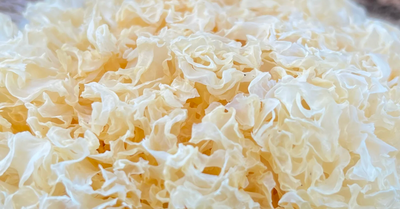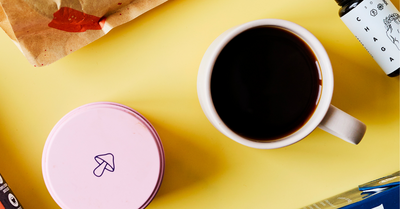
Toxic Cookware - What To Look Out For

Toxic Cookware - What To Look Out For
Toxic Cookware - What To Look Out For
We live in a time where our toxic-exposure is very high, think pollution of air and water, and we are struggling to escape it, even in our kitchens! Cookware including nonstick, aluminium and copper, have become a cause for concern in recent years. When shopping for non-toxic pots and pans, there is a lot of jargon and fluffy marketing terms that make it confusing! We have broken it down into what you should look out for, materials we love and those we avoid. All so you can enjoy cooking your delicious meals without the stress of choosing the right pot.
What do we mean by toxic?
When purchasing cookware, it's likely the ‘non-stick’ options are catching your eye because who wants to spend hours scrubbing a pan after enjoying their wonderful dinner? However, the majority of conventional non-stick pans will release toxic fumes when overheated and, when scratched, can release unwanted compounds into the foods you’re cooking. The marketing for non-toxic cookware can use confusing and misleading language, for example a ‘PFOA-free’ label may still contain PTFE! It’s important to know which materials to look out for and what this non-toxic language means.
The Jargon
PFAS (poly- and perfluoroalkyl substances)
These are a group of man-made chemicals known as the ‘forever chemicals’ as they take up to 1000 years to degrade completely and every PFAS produced is still in existence. Due to their broad application, almost every person on the planet will have traces of PFAS in their blood. PFAS include the substances PTFE, PFOA, GenX and PFOS. Aside from the health concerns of these materials, they are also doing harm to the environment through polluting water supplies.
PTFE (polytetrafluoroethylene)
Otherwise known as the magic of Teflon, PTFE is the non-stick coating discovered in 1938 and is easily available. PTFE is considered safe when used at low temperatures however overheating this material can result in off-gassing where toxic fumes are released into the air for us to inhale. These fumes can result in flu-like symptoms, with severe cases resulting in hospitalisation and even killing pet birds kept indoors.
PFOA and PFOS
These are only really of concern if you have some old non-stick pans. The World Health Organisation declared PFOA as ‘possibly carcinogenic to humans’ and has not been used in cookware since 2013, after being linked to several types of cancer, including breast, prostate, and ovarian cancer. When a product is marketed as “PFOA-free” this is just following the regulations, not necessarily a non-toxic pan. PFOS has also been heavily restricted but not entirely banned since 2009, and is still used in small quantities in textiles.
Generation X
GenX is a direct replacement for PFOA, however it has a similar chemical structure and is not as regulated. Although GenX was introduced as a safe alternative to PFOA, animal studies show oral consumption of GenX is associated with various health issues including with the liver, kidneys, immune system, development of offspring, and a link with cancer. At present we don’t have the research to prohibit use of GenX in cookware, however it’s wise to avoid the risk of ingesting this..
Aluminium pans
Aluminium is lightweight, durable and abundant, so it’s no surprise that it has made its way into our cookware. Unfortunately, aluminium is a neurotoxic metal with links to conditions of the central nervous system, such as Alzheimer’s Disease. Aluminium is often the core material of a coated pan and over time this coating chips and wears away, leaving the aluminium exposed to leach into your food.
Copper pans
Copper pots and pans are very pleasing to the eye with fantastic conductive properties, that heats food quickly and evenly. The downside is uncoated copper cookware can release copper when cooking acidic foods, such as tomatoes or anything containing citrus or vinegar. When coated, copper cookware is often lined with tin which is non-toxic but scratches easily and wears off quickly, leaving the reactive metal exposed.
Ceramic coated pans
While 100% ceramic cookware is perfectly safe to use, ceramic coated pans may have some health concerns tied in. Soft ceramic coating is not extremely durable and may result in chipping and scratching after only a few uses, which allows the ceramic coating (containing unknown materials) to be consumed as well as exposing the core material which may be copper or aluminium.
What can I use?
While it might seem like most of your go-to pans have been dumped in the toxic bin, there are still plenty of safe options for you, many of which are just as functional and aesthetically pleasing.
Stainless steel - this is made with a combination of nickel, iron and chrome, it’s durable but requires soaking after cooking or can become difficult to clean.
Anodized aluminium cookware - this has been treated with an acidic solution that gives the metal a non-stick quality and reduces the risk of aluminium leaching into foods.
100% ceramic pans - these are not coated with anything and are pure ceramic. Ceramic pans are extremely durable, although they are more costly.
Glass - this cookware is completely non-toxic, however there is a higher risk of breakages, particularly if there is a rapid shift in temperature or the glass quality is poor.
Cast iron - this is a firm favourite in households due to the durability of the material. Cast iron pans do contain iron which may leach into foods, however this is generally not unsafe, apart from in cases of haemochromatosis (too much iron in the blood), it could even be beneficial to those at greater risk of iron-deficiency anaemia, for example women and vegetarians.
Unsurprisingly these preferable cookware materials come with a higher price tag than their more toxic counterparts, and while they are more durable and will last longer, we are not all ready to part with the cash for these items. If you are standing by your PFAS lined pans you can increase the safety by reducing the wear and tear on your cookware, using the appropriate cooking utensils, for example using a wooden spoon over a metal spatula will reduce scratching.
The Gist
That was a lot of information, so here’s what you need to remember:
- Avoid PFAS lined cookware.
- Avoid cookware with an aluminium core.
- Only use copper with non-acidic foods and do not use them daily.
- Discard any non-stick coated pans that are scratched.
- Opt for cast iron, glass, ceramic and stainless steel.
- Use wooden spoons to avoid damage.
- If you care for your cookware it can last for decades.










